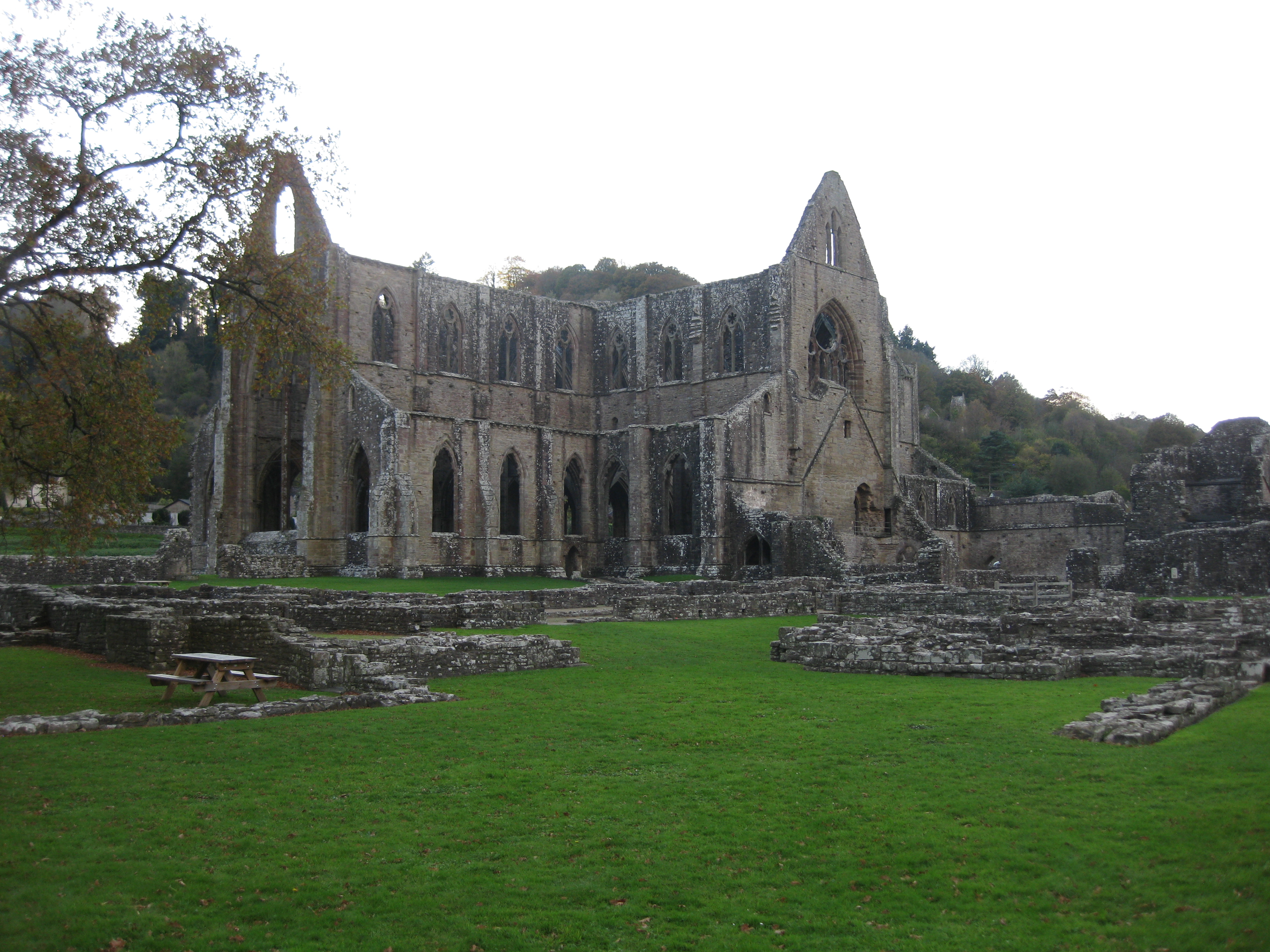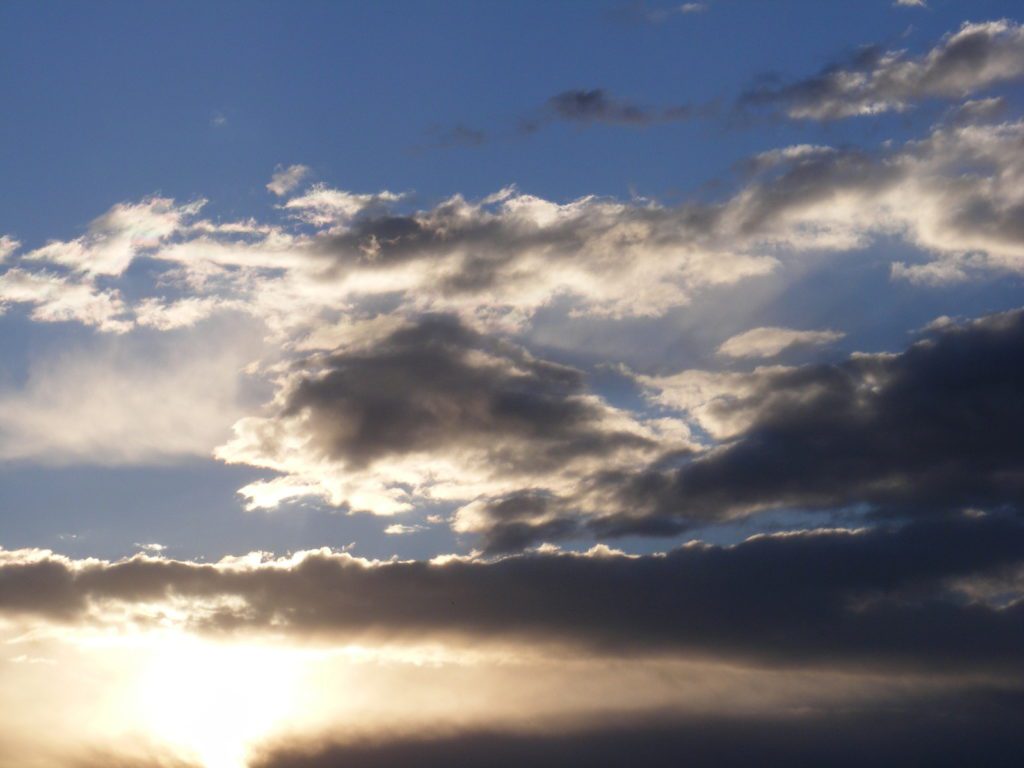We’d arranged to spend a day of sightseeing on my most recent teaching swing through the UK, so the afternoon of November 7 found me in a car with my host Jackie Evans and my old friend John Moss, winding our way back to Bristol after a magical day of exploring some fabled holy sites and “thin places” in the picturesque Welsh countryside.
Darkness drops quickly in November; the sun was already barely cresting the ridgeline when we rounded a bend in the Wye River, and suddenly there was Tintern Abbey.
 The sight does, literally take your breath away. There, nestled in the riverbed like a strange Gothic botanical, more growing out of the landscape than towering over it, stand the haunting ruins of a 12th century Cistercian Monastery, still largely intact. In 1536 it fell victim to Henry VIII’s Dissolution of the Monasteries edict, his brutal initiative to disestablish the Roman Catholic Church in England. Monks were deposed or slaughtered, the building was sacked and vandalized, its treasures were confiscated for the crown. Three centuries of peaceful and compassionate striving in this “school for the Lord’s service” ended in an orgy of violence.
The sight does, literally take your breath away. There, nestled in the riverbed like a strange Gothic botanical, more growing out of the landscape than towering over it, stand the haunting ruins of a 12th century Cistercian Monastery, still largely intact. In 1536 it fell victim to Henry VIII’s Dissolution of the Monasteries edict, his brutal initiative to disestablish the Roman Catholic Church in England. Monks were deposed or slaughtered, the building was sacked and vandalized, its treasures were confiscated for the crown. Three centuries of peaceful and compassionate striving in this “school for the Lord’s service” ended in an orgy of violence.
Over the centuries, the old stonewalls fell deeper into decay. Vines and wild brambles began to claw at their side. The Romantic poets and painters loved it. By the time the poet Wordsworth visited the place in the early nineteenth century, it far more resembled a Druidic temple or a wildly surrealistic set for a Dionysian mystery cult than any kind of sober and lucid monastery, let alone a Christian one.
Once inside its walls, however, I recognized the vibration instantly. I’ve been to other such Cistercian sites—Fontenay in Burgundy, The College des Bernadins on the Parisian Left Bank. I’ve also prayed with the monks at the beautiful
Abbey of Our Lady of The Holy Spirit in Conyers, George, modeled closely on these ancient, architecturally stunning Cistercian sites. The energy is palpable, serene—distinctly feminine, unmistakably Cistercian. Funny, I had forgotten—or perhaps never realized—that Tintern Abbey was a Cistercian house….
The day was unusually cold for early November—fortunately, as it turns out, for us, for as the sun swiftly disappeared beneath the ridgeline, the few remaining tourists disappeared almost as swiftly. John and Jackie and I were soon all alone in this great, solemn sanctuary, its roof wide open to the darkening sky, its former stone floors now a carpet of green.
I found myself being drawn more and more insistently to the east end, where a gaping window and a small outline of stones marked off what would once have been the steps to the high altar. And as I allowed myself to be drawn, those words from T.S. Eliot’s Four Quartets began to gather in my mind:
You are not here to verify
Instruct yourself, or inform curiosity
Or carry report. You are here to kneel
Where prayer has been valid…
And suddenly I indeed found myself kneeling before that imaginal altar railing, and then in full prostration. The energy of it literally pulled me down. And there, on the eve of the American presidential elections, those ancient stones again began to speak, and in a few timeless moments some of their own ancient knowing came to be planted within me.
Words (even “reflected in tranquility”) cannot begin to convey it, since like most of those brief downloads mediated through what Gurdjieff called “higher emotional center,” the vibrational intensity overwhelms the rational faculties and leaves one stammering in the dust. It’s happened once or twice before, always like this.
Let it be said that when I rose to my feet once again, I already knew beyond any doubt what the election results would be, and where the wheel set in motion the following day would most likely lead. My heart ached, but I was at last ready to face it.
It was not the content of the message but its emotional coloration that left me so transfixed. With infinite tenderness, resolve—like the eyes of Michelangelo’s Pieta I had seen for the first time only weeks before at the Vatican—it spoke to me in those moments, shared what could be shared of the quiet endurance in the face of reversal, deepest sorrow, human atrocity. “Yes,” said the walls, quietly, “we know.. And yet, through all of this, something still stands.”
“Just as we are still standing now,” they whispered to my heart—“and see how we have drawn you here and you are listening right now. Do not look upon us as a destroyed monastery, but as a living transmission.
“Know that what is forged in the alchemy of love is beyond the of ravages of time. All else may dissolve; this alone remains. But in your own transfigured heart, you will always find it.”
Then the walls fell silent, and the intensity slowly waned. I rose, rubbed the mud off my pants, and rejoined my friends. As we traced our way back to the car, the last ray of sunset set the whole scene aflame in a final eloquent coda.
“Sin is behovely, but all shall be well
And all manner of thing shall be well.”


